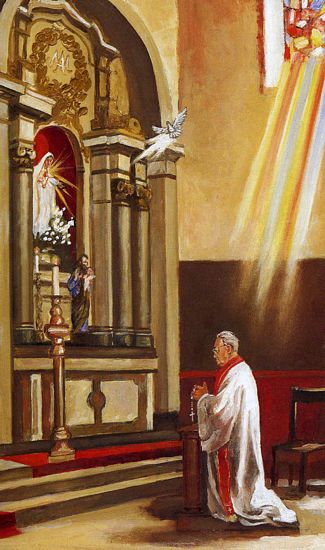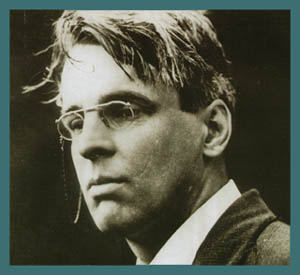William Butler Yeats was an Irish poet, a dreamer, and a visionary fascinated by folklore, ballads, and superstitions about the Irish peasantry. His poetry has a Celtic flavour mixed with mysticism and melancholy. His aim in writing poetry was to make the world conscious of the beauties of Celtic literature. As he grew older, he deviated from pleasant lyrics to verses with sterner discipline and deeper thought.
Stolen Child by W.B. Yeats was included in the volume of Crossways, which was published in the year 1889. It was written in 1886 and published in 1889. William Butler Yeats was 21 when he composed this poem. The poem celebrates the stories of Ireland, which his mother loved. It revolves around a group of fairies who lure a child away from his home to a fairy world.
The Stolen Child: Summary
Stanza 1:
The poet describes the ‘leafy island’ where the fairies live. The leafy island lies where the rocky highland of Sleuth Wood touches the lake’s water. Herons are sleepy awakening rats with the noise of their wings flapping. The fairies hid their fairy pots full of stolen berries and red cherries. The fairies call the human child to come to the waters of the lake and wild rock. The fairies ask the child to walk hand in hand with them towards their fairy island because the world in which the child lives is more full of miseries and sorrows than he can understand.
Stanza 2:
The fairies talk about a place that is far away from the distant Roses, where the stream of moonlight falls on the grey sands and brighten them, where the fairies walk all night and dance, join hands together, and cast glances at one another till the moon has reached heaven. The fairies tell us that they jump here and there and chase bubbles at night while the world full of troubles sleeps and is full of anxieties even when they are sleeping. The fairies call the child to come to the fairy island because the child lives in such a world that is fuller of miseries and tears than he can comprehend.
Stanza 3:
The third stanza of The Stolen Child describes where the fairies look for sleepy fish and give them disturbing dreams by whispering in their ears. They say that place lies where the water flows from hills above Glen-Car and causes out in pools among the tall grass. The fairies bend over the herbs against the dewdrops near the streams. The fairies call upon the human child to their fairyland because the world where the human child lives is fuller of miseries than the child can think of.
Stanza 4:
In the final stanza of The Stolen Child, the child goes to the island with the fairies. The child looks serious. The fairies say that the child will no longer hear the sound of the calves on the hillside or the sound of the kettle over the fire that gives him warmth. The child will no longer see the brown mice jumping around the boxes containing oatmeal. He will miss the sights and sounds of the world because he is now coming to the leafy island to live with the fairies to escape from a world full of miseries and sorrows.
The Stolen Child: Analysis
The poem, The Stolen Child, is composed of four stanzas. Nature and the land of fairies present images of freedom throughout the first three stanzas. The first three stanzas of the poem The Stolen Child has Celtic references that make the reader realize that W.B. Yeats wants to return to a more innocent and less politicized world of the past. Celtic legend often offers a myth about fairies stealing a child and replacing it with a changeling. Yeats uses this myth in his poem, The Stolen Child. He uses this myth to show his desire to return innocence to society. The poet uses the island’s image to symbolize the separation from the natural world and the freedom that it creates for the fairies. “There lies a leafy island” refers to a place far away from the world of pain, which is the real world in which we dwell. The ‘wild’ represent the unrestricted life led by the fairies.
On the other hand, the poet used a refrain in The Stolen Child. There is a refrain at the end of each stanza which provides a musical tinge to the poem. A refrain is a repeated line or several lines in a poem or song, usually at the end of each verse. There is also a contrast in the theme in this poem. The human world is full of joys and sorrows and tears and laughter.
William Butler Yeats used vivid imagery in his poem, The Stolen Child, to describe the dwelling place of the fairies. The description of flora and fauna of the fairy island is very appealing and convincing to its readers. The herons, the trout, the ferns, and the grey sand paint a romantic colour in the poem. A world of fantasy and illusion is introduced in the poem. The use of ‘water’ is symbolic of free-flowing life.
The poem’s plot is a metaphor for the return to innocence, which is characterized by childhood. The fantasy world created by Yeats is a sharp contrast to the real world. The creation of such a world shows the poet’s dissatisfaction with the real world. Yeats portrayed his disappointment with modern society, probably because of the increased violence in society. The child finally leaves his world full of sorrows and tears. He forgets his friends; he forgets his family. The fairies and leaves enchant him with them to a world free of miseries and sufferings.
In the end, Yeats keeps the readers in doubt about whether the fairy world is better than the world in which we dwell.
Updated by Anjali Roongta on 16th April 2023.
Some online learning platforms provide certifications, while others are designed to simply grow your skills in your personal and professional life. Including Masterclass and Coursera, here are our recommendations for the best online learning platforms you can sign up for today.
The 7 Best Online Learning Platforms of 2022
- Best Overall: Coursera
- Best for Niche Topics: Udemy
- Best for Creative Fields: Skillshare
- Best for Celebrity Lessons: MasterClass
- Best for STEM: EdX
- Best for Career Building: Udacity
- Best for Data Learning: Pluralsight















This analysis is somewhat incomplete, the stanza by stanza description is little more than a reinterpretation/restatement of the words of the stanzas without taking into account the important imagery from Yeats’ youth. He grew up in Sligo and spent many happy times during his childhood in places like Rosses Point, Glencar Waterfall and Slish (Sleuth) wood which likely are references to simpler, happier times. Those are intrinsic to the theme of the author’s dissatisfaction with the direction society was taking, which contrast the innocent days of (his) youth.
This really helped me with my assignment for school. Thank you so much!!
This really helped me with my assignment for school. Thank you!
Was the stolen child not a reference to a 4 year old sibling of Yeats who died.
I’ve always thought it was about euthanasia. If you are at all familiar with fairy lore, you’ll know they are tricksters.Yeats would have been very familiar with the tales. They lure the child with childish pleasures; chasing bubbles, speaking to animals, dancing and leaping, berries and cherries. They let the child know some of the things he’ll miss at home as a truthful warning.
The characters in fairy lore are usually given a chance to back out before they seduce them entirely. They are always depicted as more clever than us.They have luredany humans to either death or madness and more!
I think they did it out of pity, though.
Yeats had a sibling, I believe, that died very young. Yeats might have thought about the grief and pain of the world and romanticized the tragedy.
That’s my take on it anyway. Always makes me cry….